Do you know that a blunt knife is more dangerous than a sharp knife? Now there aren’t any experiments behind that statement.
But the idea is you apply more force when using a blunt knife than when using a sharp knife. With that much force, one slip and you can end up with one ugly scar.
A sharp knife does what you want it to do. A blunt knife does whatever the opposite is. And that is frustrating.
What point am I trying to make here? I’m glad you asked.
Sharp knives are more efficient, safer, and less frustrating than blunt knives. With that said, a blunt knife was most likely once a sharp knife until you started using it all wrong.
So what are the actions that blunt the edges of knives? How do you fix all your blunt knife frustrations?
In this article, you will find out what makes a good kitchen knife and the composition that makes your knife sharp and strong.
Then I will delve into the relationship between your cutting boards and your knives, how they affect each other, and what to do to give them somewhat of a happy ever after.
Finally, I will give you some tips to keep your knives sharp for longer.
Sounds good? Let’s get right into it.
JUMP TO: Qualities of A Decent Knife | What Makes Knife Sharp | What is HRC of Knife | How Cutting Board Affect the Sharpness Of Knife | Cutting Board Materials to Avoid | Best Cutting Boards For Knives | Tips to Keep Knives Sharp |
- Dull knives are more dangerous than sharp knives.
- A knife with a higher HRC is stronger and harder than one with a lower HRC.
- Plastic and wooden cutting boards are easier on your knives.
- Sharpen your knives every 6 to 12 months.
- Hand-wash and hang your knives to keep them sharp for longer.
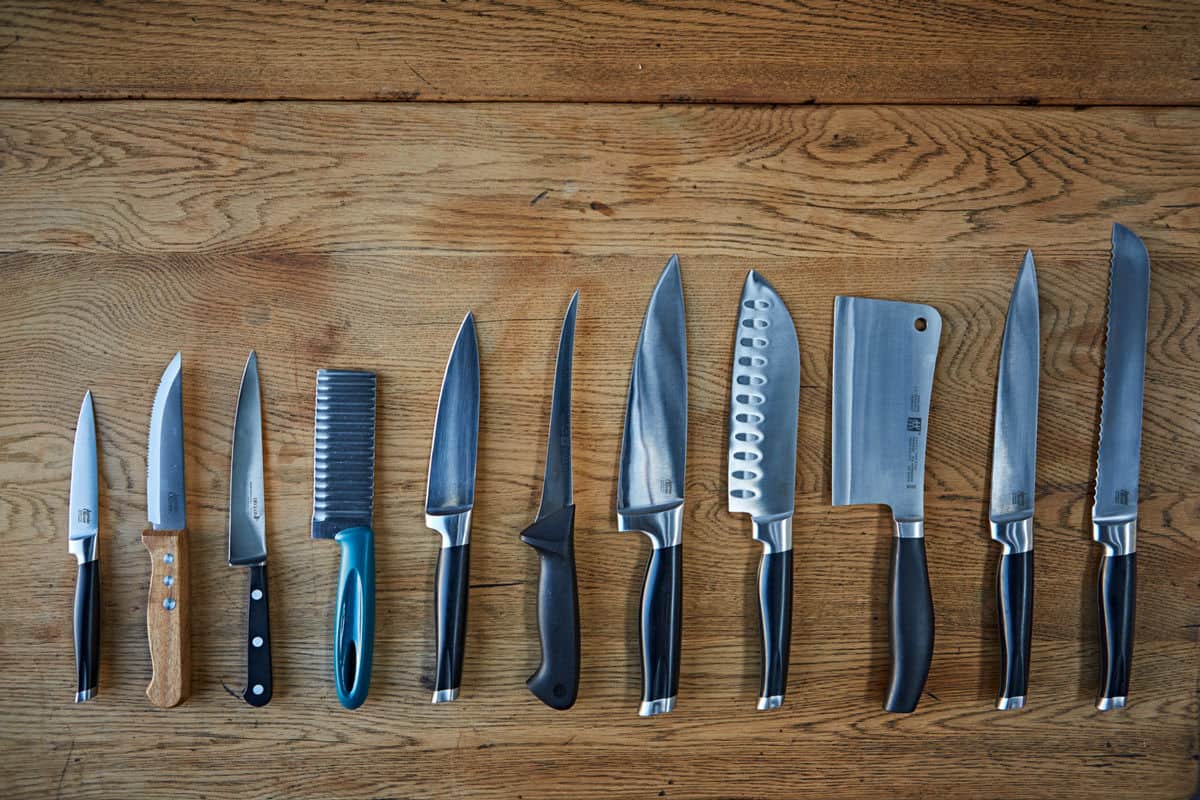
Source: Jamie Oliver
What makes a decent kitchen knife?
A good kitchen knife is one that:
- Is sharp and strong.
- Remains sharp for six to twelve months with attentive maintenance.
- Is easy to use. It does what you want it to do 99.9% of the time.
What makes your knife sharp and strong?
The steel composition and hardness of your knife are responsible for its durability and sharpness. They determine how easily your knife is deformed, scratched, and bent.
A scale known as the Hardness Rockwell Scale is used to measure the hardness of materials. In our case, that material is steel. Depending on its purpose, a good steel knife should measure between 54 HRC and 66 HRC.
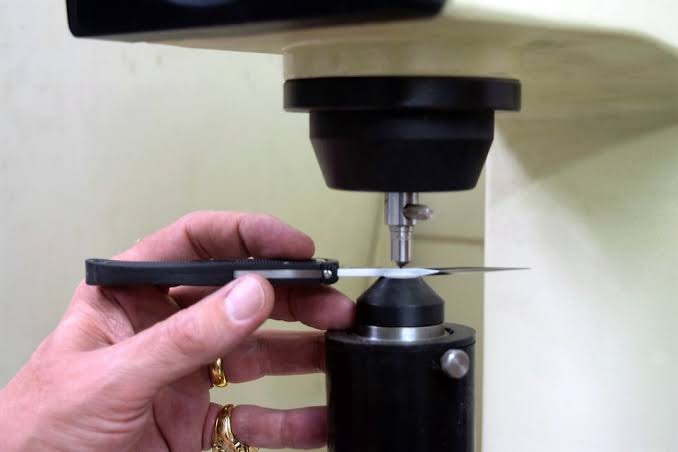
Source: A.G. Russell Knives
What does HRC mean for your knives?
A knife with a higher HRC is harder and stronger than one with a lower HRC. It is more resistant to scratches and lasts longer if maintained well. However, it is more brittle and could break more easily.
On the other hand, a knife with a lower HRC is softer and malleable. Although the sharp edge dulls faster, a knife with a lower HRC is less likely to break and chip.
Now you know what to look for in a good knife, it is time to learn how to maintain it.
Related Read: Can You Stain Cutting Boards? [Methods Explained]
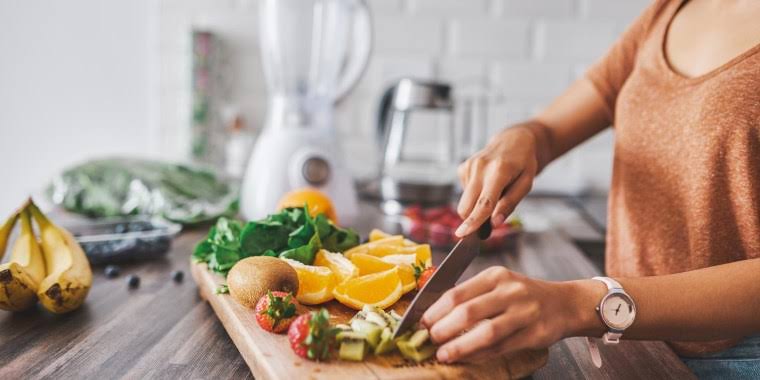
Source: Today.com
How Do Cutting Boards Affect the Sharpness of Knives?
Before you try out your new knife on a cutting board, there is one thing you need to know. If the material of your cutting board is harder than your steel knife, it will blunt the edges. And it will do that almost immediately, gradually, until what you have left is a frustrating blunt knife.
It is because the hard surface rolls over the force of your cutting, which distorts the edge of your knife. Stressed edges equal dull knives.
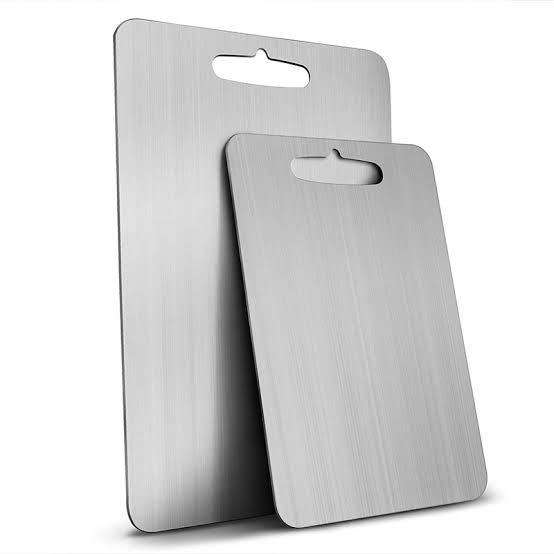
Source: Alibaba.com
Cutting Board Materials To Avoid.
Here is a list of some materials you should never use your knife on.
- Glass.
- Granite.
- Stainless steel.
- Marble.
- Ceramic (and porcelain)
- Corian.
The list goes on. However, these are materials you will most likely find in your home. Please help your knives avoid them.
Best Cutting Board Materials for your Knives.
Unfortunately, only two materials make it onto this list. The good news is you can find them anywhere. The two types of cutting boards favored by professional chefs and culinary masterminds are:
- Wood Cutting Boards.
- Plastic Cutting Boards.
When it comes to prolonging the life of your knives, these two are your best bet.
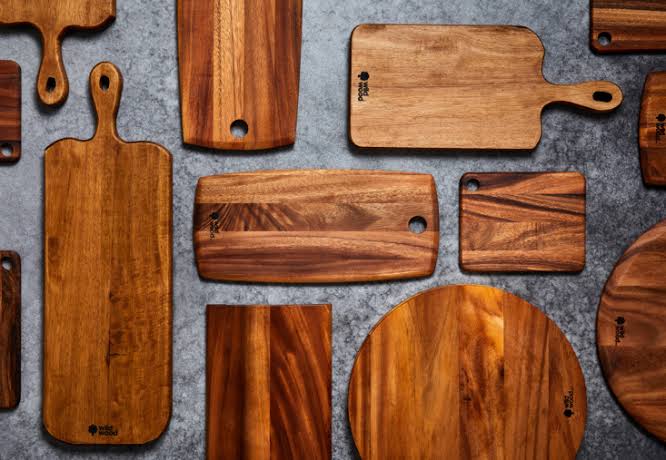
Source: www.wildwood.com.au
Wood Cutting Boards
Hardwood Vs. Softwood
Before you get a wooden cutting board, you need to decide whether you want hardwood or softwood. These are the differences you need to keep in mind before making that decision:
- Hardwood is more durable, meaning it can resist wear and tear better.
- Softwood is less durable and cracks faster.
- However, hardwood is harder on your knives than softwood. Hardwood will dull the edge of your knife faster.
If you want to protect your knives, you should go with softwood. But if you are buying for the longevity of the cutting boards, you should go with hardwood.
Some examples of hardwood are mahogany, white oak, hard maple, ash, birch, and walnut.
The Best Wood Grain for your Knives
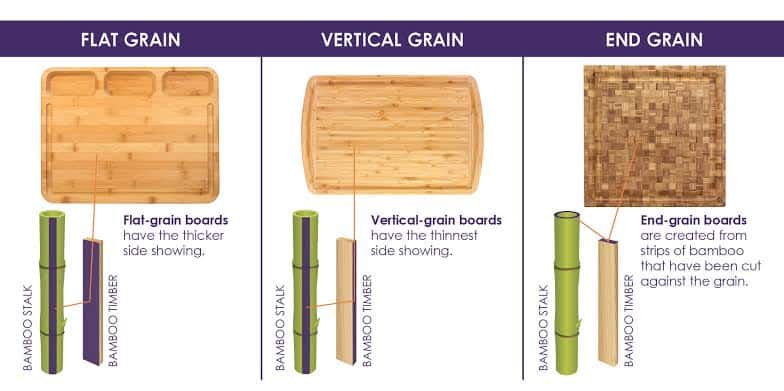
Source: Totally Bamboo
Wood grain refers to the pattern of fibers found in cut wood. Typically, cutting boards have three types of grains:
- Edge Grain.
- End Grain.
- Flat Grain.
- Edge Grain: this is the most common type of cutting board. It is durable, strong, and easy on your knives. Also, it is the cheapest. It lasts long with proper maintenance.
- End Grain: these cutting boards are harder to manufacture, which makes them the most expensive. Your knives will fare better with these, but they are thick and heavy. They are easily identifiable because of their checkerboard pattern.
- Flat grain: these are the inferior cutting boards in the group. They are the cheapest but the least durable. It’s best to avoid these.
Pros of Using Wood Cutting Boards
- They are durable: wood boards last longer and can resist wear and tear.
- Easier on your knives: with the right wooden cutting board, your knife will be in control. The wood will give under the onslaught of your knife because it is softer than steel. It means that the more marks left behind by your knife, the better.
- Antibacterial properties: compared to plastic cutting boards, wood boards are safer to use.
In fact, wooden cutting boards have been proven safer since 1993. An experiment led by Dean O. Cliver and Nese O. Ak, scientists at the University of Wisconsin, introduced three different bacteria to plastic and wood cutting boards. They found that 99.9% of the bacteria on the wooden cutting boards had died out within three minutes, whereas the plastic cutting boards had little effect on the microbes.
It happened because woods have natural antibacterial properties. When there are cracks on your cutting boards, wood sucks bacteria into those cracks, allowing them to die off as it dries. Plastic boards, on the other hand, retain the bacteria.
Also Read: Can You Put Glass in the Oven? [Tips to Know]
Cons of Using Wood Boards.
- Wooden cutting boards are more expensive.
- They require more effort to clean and maintain.
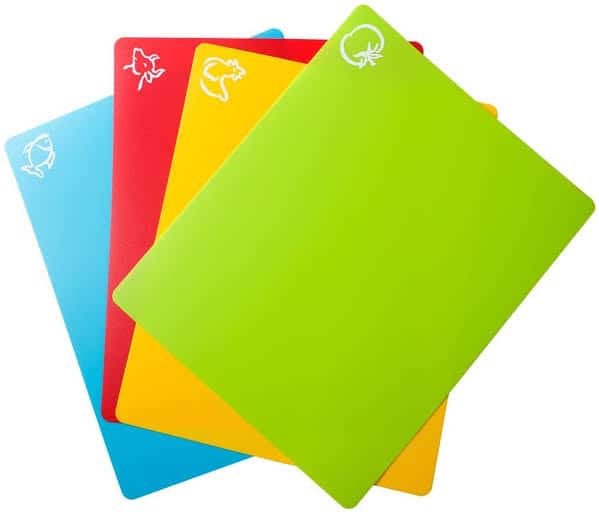
Source: Ubuy Nigeria
Plastic Cuttings Boards
Hard Plastic vs. Soft Plastic.
According to Bob Tate, a professional knife sharpener, if you can cut a strip out the side of a board with a knife, you have found the right cutting board. It means between hard and soft plastic, the latter yields to your knife more easily.
However, if you are looking for a cutting board that will last long, hard plastic is your best bet.
Pros of Using Plastic Cutting Boards.
- They are less expensive.
- They are thinner and lighter.
- Easier to clean: you can throw a plastic cutting board into a dishwasher. Never try that with a wooden cutting board.
- Doesn’t stain as easily as wooden cutting boards.
- You can color-code your cutting boards to prevent cross-contamination. It is important to separate the cutting plastic boards you use for raw meat especially.
Cons of Using Plastic Cutting Boards.
- No antibacterial properties.
- Looks unattractive with too many cracks and scars.
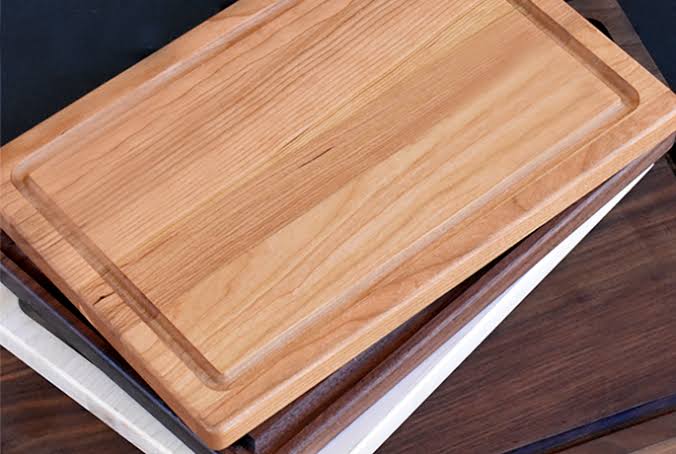
Source: Wood Cutting Boards
Wood vs. Bamboo Cutting Boards.
First, Bamboo is grass, not hardwood. That makes it easier to cultivate. Therefore, Bamboo cutting boards are cheaper.
Pros of Bamboo Cutting Boards
- Harder and less porous.
- Resists wear and tear more easily.
- Harder to scar.
Cons of Using Bamboo Cutting Boards.
- Harder on your knives.
- Less antibacterial properties.
Tips To Keep Your Knives Sharper for Longer
- Avoid using your knife on a surface harder than steel.
- Hone your knives before use. Choose a ceramic honing rod over a steel rod because it is ten times stronger.
- Sharpen your knives every six to twelve months. You can use a whetstone or a knife sharpener.
- Don’t put your knives in the dishwasher or in a drawer. In a dishwasher or drawer, your knives bump against hard surfaces. It makes them go blunt.
Try hand washing and hanging your knives on the wall instead. Finally, you can use a blade guard before putting your knives in a drawer.
![27 Types of Cutting Boards Explained [Buying Guide Included] 27 Types of Cutting Boards Explained [Buying Guide Included]](https://houseadorable.com/wp-content/uploads/2022/12/cutting-board.jpg)
![Wood Cutting Board Vs. Plastic Board [Which is Safer?] Wood Cutting Board Vs. Plastic Board [Which is Safer?]](https://houseadorable.com/wp-content/uploads/2023/01/wood-board.jpg)
![Bamboo Vs. Wood Cutting Board [9 Differences Explained] Bamboo Vs. Wood Cutting Board [9 Differences Explained]](https://houseadorable.com/wp-content/uploads/2023/01/cutting-board.jpg)
![Charcuterie Board Vs. Cutting Board [8 Differences] Charcuterie Board Vs. Cutting Board [8 Differences]](https://houseadorable.com/wp-content/uploads/2023/01/316322082_5650827684977137_862859335334204275_n.jpg)
![Is Acacia Wood Good For Cutting Boards? [Explained] Is Acacia Wood Good For Cutting Boards? [Explained]](https://houseadorable.com/wp-content/uploads/2023/01/wood-table-top-with-acacia-chopping-board-with-blur-kitchen-counter-background-is.jpg)
![Is Bamboo Wood Good for Cutting Boards?[8 Reasons Explained] Is Bamboo Wood Good for Cutting Boards?[8 Reasons Explained]](https://houseadorable.com/wp-content/uploads/2023/01/316002766_5887666997938019_9068589372518329358_n.jpg)
![Acacia Vs. Bamboo Cutting Board [7 Differences Explained] Acacia Vs. Bamboo Cutting Board [7 Differences Explained]](https://houseadorable.com/wp-content/uploads/2022/12/fetured.jpg)
![Is Mold on Cutting Board Dangerous? [Explained in Detail] Is Mold on Cutting Board Dangerous? [Explained in Detail]](https://houseadorable.com/wp-content/uploads/2023/01/image.jpg)